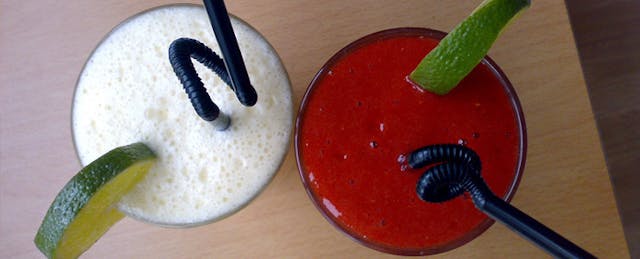Cookbooks save lives. Seriously. Before codified culinary knowledge, humans had to experiment by digesting mixtures of random artifacts, discovering their gastro-intestinal effects through trial, error and death. Thankfully, somewhere along the way, homo sapiens started collecting step-by-step recipes to avoid heartburn and poison, eventually yielding straight-up gustatory delight to the point that you can now walk down any city street in America and order a Boston Cream.
I think the cookbook is a great model for what early blended schools could be doing for teachers as we learn what works and what doesn’t.
This approximates the thinking behind Mission Dolores Academy and St. Therese Academy’s approach to professional development. These two blended-learning schools are the first of Seton Education Partners’ Phaedrus Initiative, which is helping inner-city Catholic schools leverage technology to boost academics and revamp their finances.
At both schools, we found it was easy to come up with ideas for using technology to differentiate or motivate, but when we tried to apply these ideas, the clunkiness of the available digital content programs posed frustrating obstacles, each one causing our already time-stretched teachers a lot of heartburn.
So my colleague, Jeff Kerscher, and I decided to “pilot” recipes intensely with individual teachers, finding and fixing all the little problems that popped up along the way, until we had a start-to-finish recipe that was easy, quick, and would yield just the results we wanted. Once refined, we turned the recipes into videos for use on our professional development days. They were a big hit with our teachers, due largely to the fact that fellow teachers were vouching for the processes.
Below are a few of these beginner recipes using some of the more popular digital content providers: Achieve3000 and Compass Learning. These recipes explain tried-and-true processes for effective administration of digital content providers in an in-class rotational model.
Each video addresses some combination of the three goals we have for our digital programs:
1. Personalization (students should hit their proximal zone of development every time they sit down in front of a screen);
2. Motivation (good work on computers must be recognized; feedback to students should be frequent and meaningful);
3. Alignment (how do we take advantage of the fact that resonance between digital instruction and teacher-led instruction can accelerate learning?)
We believe the difference between great theory and effective practice is a refined process. We look forward to feedback that could help us improve the details of these processes, and hope this may prompt other blended schools to share the nitty-gritty of their promising processes, so that together we can reduce the heart-burn and improve our collective recipes for student success.
Assigning and Grading work with Achieve3000
Megan Nichols and Theresa Morgan achieved impressive results in reading gains on the NWEA Winter MAP Assessment. They are heavy users of Achieve3000, which delivers reading exercises at students’ own reading levels.
Applicable for: grades 3-9, Language Arts, Social Studies and Science.
Aligning Compass Learning with Direct Instruction
When digital lessons match with direct teacher-led instruction, student motivation and learning both improve. Mission Dolores Academy’s kindergarten teacher, Morgan Gwin presents a time-efficient way to control the lessons students receive, while still allowing the adaptive program to differentiate based on demonstrated proficiency.
Applicable for: grades K-2 Language Arts, Math
Compass Learning Sticker Charts
Students need feedback about how they are doing on the computers. They need to know teachers care. Mission Dolores Academy’s first grade teacher, Shelley Reid, describes a process she uses to consistently recognize good student work (and discourage students from the strong tendency to “click through” until they find something fun).
Applicable for: grades K-2 Language Arts, Math


